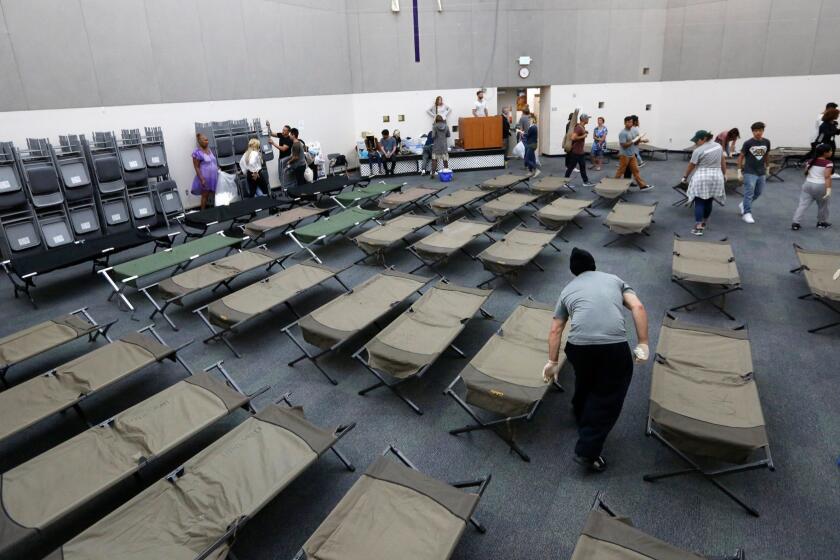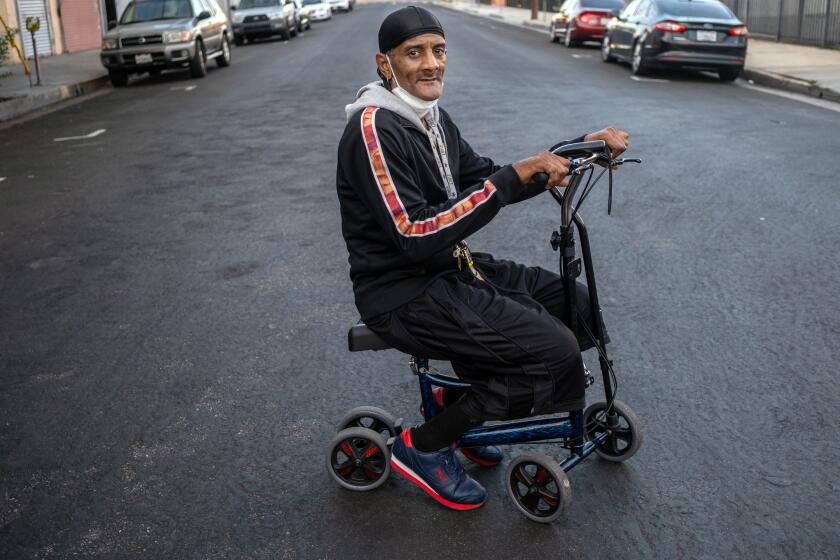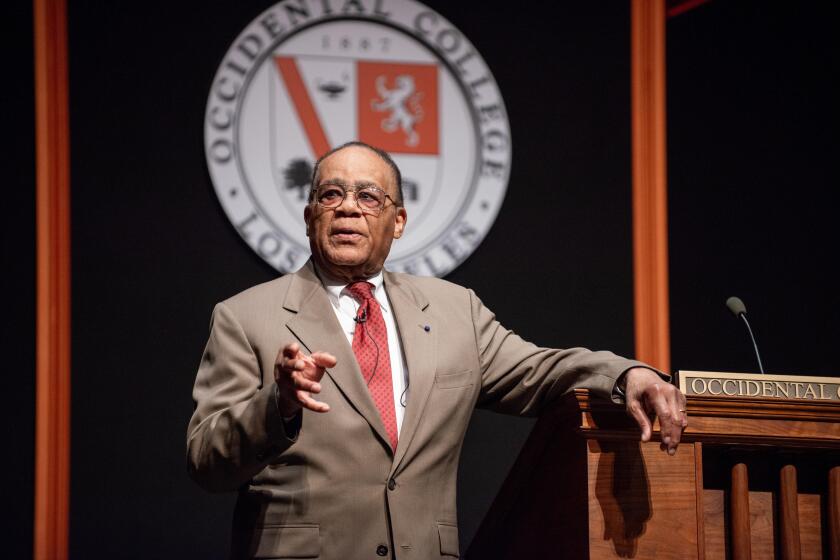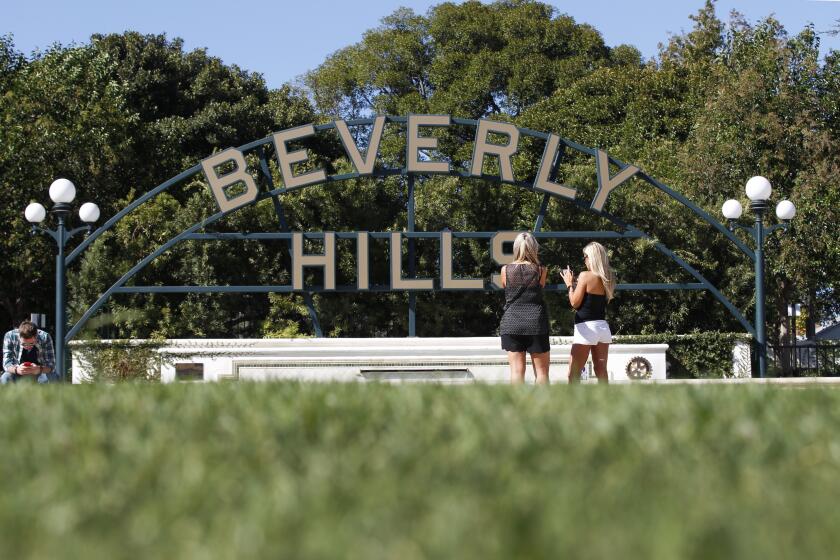Andy Bales retires after 20 years at the Union Rescue Mission leaving a final legacy: his house
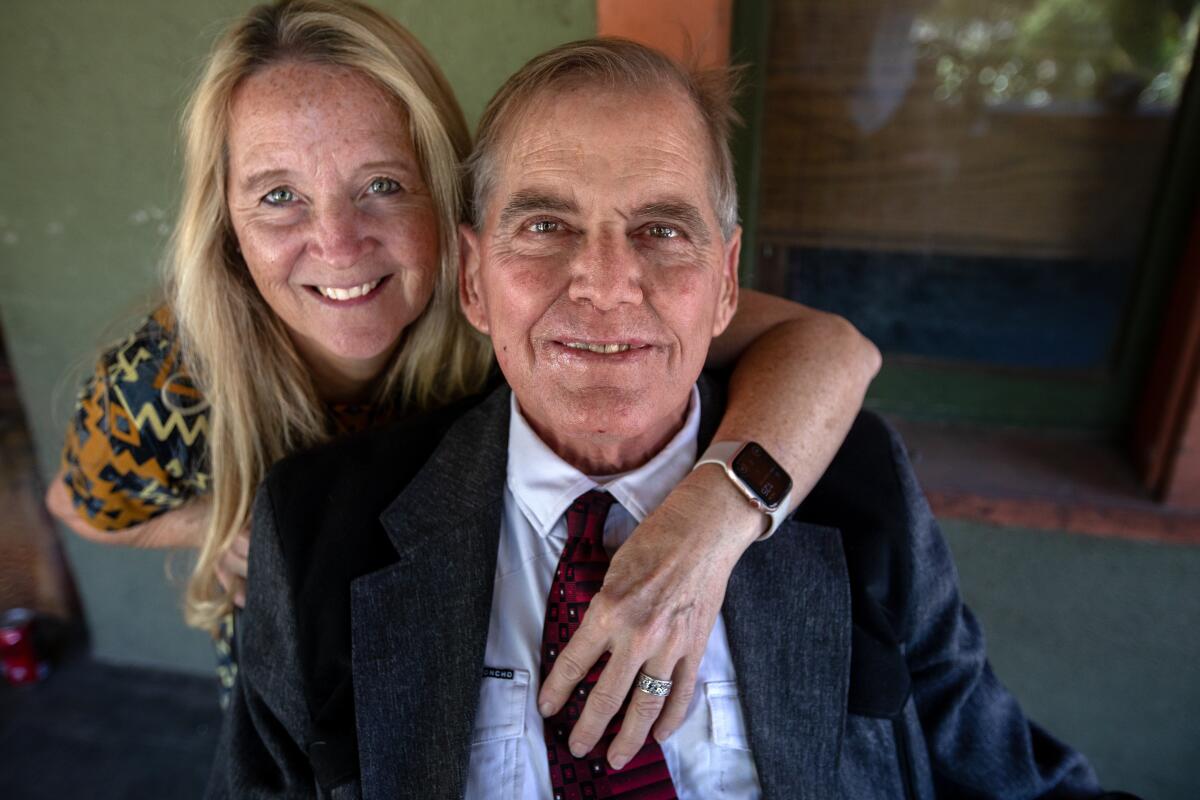
Twenty-four years ago, a minister to the down-and-out of Des Moines took a mid-career leap into the unknown, moving his growing family west to become pastor for poverty outreach at a Pasadena church.
Four years later, the Rev. Andy Bales was offered a more prominent and challenging role as head of the Union Rescue Mission, the faith-based shelter in a five-story building on Skid Row. In his 20 years there, Bales staunchly defended the recovery model of homeless care — with Christian-centered therapy — against the secular shift to the philosophy that housing should come first without preconditions.
Now Bales is calling it quits. He and his wife, Bonnie, who raised their six children and cared for 25 impromptu foster kids in a rambling Pasadena Craftsman, are heading back to Iowa to be closer to family there.
Though he has no illusions that his work in Los Angeles has turned the tide on homelessness — it’s only gotten worse — Bales is leaving an agency that has grown under his leadership with new family shelters in Sylmar and South Los Angeles, along with a more personal legacy — his house.
“Live from skid row, it’s Tuesday night!”
In the months since announcing his retirement from Union Rescue Mission in May, Bales has been working with the faith-based nonprofit Door of Hope to see the house he lived in for 20 years become a transitional home for 20 families.
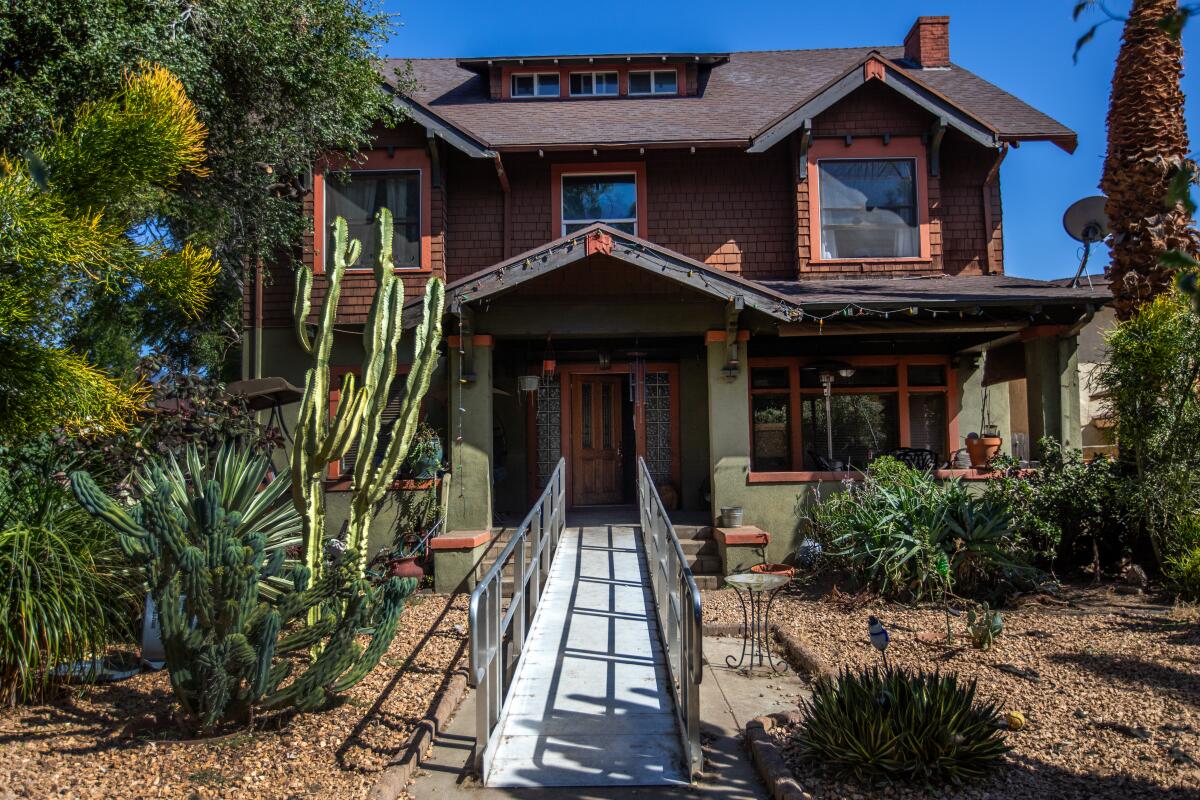
Door of Hope, which operates four transitional shelters in Pasadena and neighboring cities, is purchasing the 116-year-old house on Marengo Avenue for $1.2 million, more than 20% below its estimated value, and working with Pasadena to approve and finance a $1.9-million expansion that will leave the main house intact.
Megan Katerjian, chief executive of Door of Hope, said the city has approved the project conceptually as a 20-bedroom house, requiring no zone change, and that she expects to submit architectural plans by next spring and be ready for construction in the summer.
When finished, the home will take in homeless families of any configuration as long as they have custody of children under 17.
“Door of Hope can take any kind of family — single-parent, two-parent,” Katerjian said. “We’ve even taken multigenerational families, grandma, mother, child.”
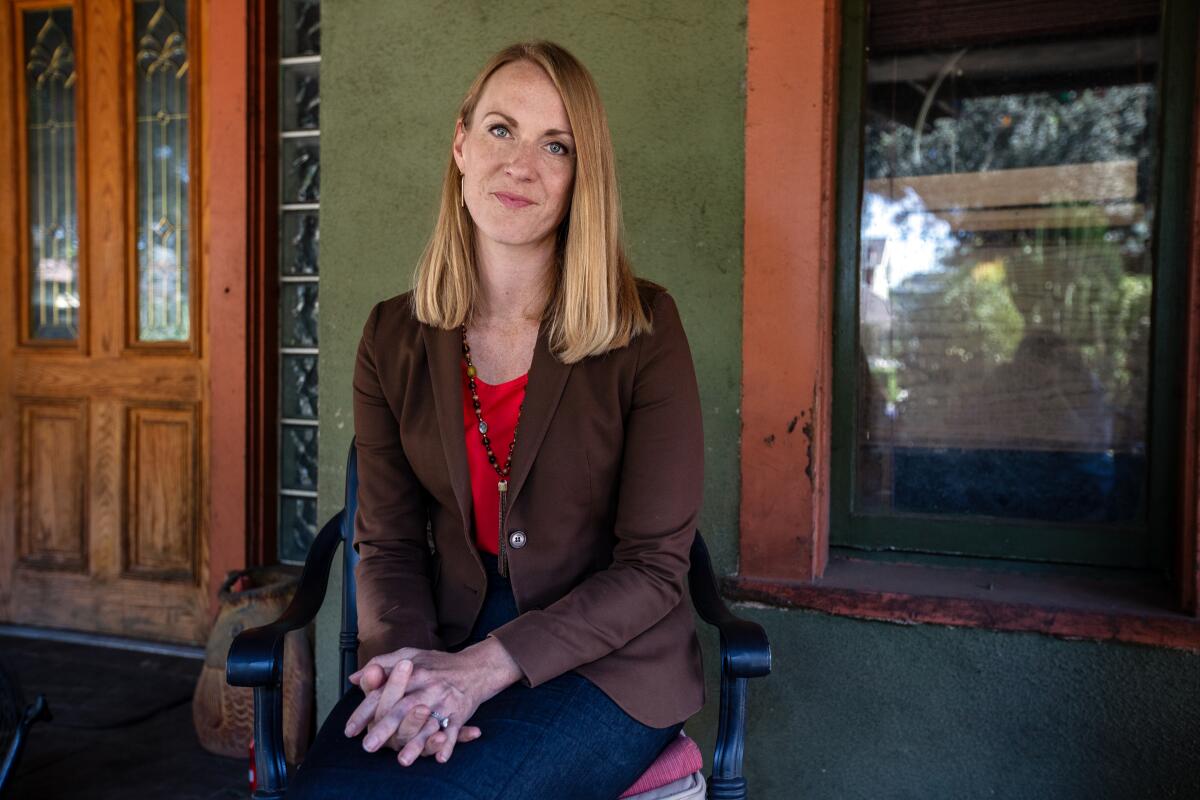
The agency embraces the transitional model, allowing clients up to two years to get back on their feet and prepare for independent living. The average stay is about 10 months, Katerjian said.
True to Bales’ commitment to the redemptive shelter model, their clients are tested for illegal drugs on admission, live in an alcohol- and drug-free setting and are required to engage in therapy and gain employment within 90 days, with some “flexibility and grace.”
“If a mom is going through a custody battle in court or other trauma, then we flex,” Katerjian said.
“We really believe in the transitional housing model, especially for families that need more of a stable holistic environment that will help them successfully transition to permanent housing.”
That orientation puts Door of Hope out of sync with the prevailing “housing first” philosophy holding that the most effective and cost-efficient option for homeless people is permanent housing with no conditions.
As L.A. officials and residents push to get rid of RV encampments, one woman’s story reflects the mountainous obstacles faced by those who try to find housing.
It also largely disqualifies Door of Hope from federal funding that has been withdrawn from the transitional model, forcing the agency to raise its own funds.
Katerjian said its capital campaign currently covers all operations through 2026.
Door of Hope’s clients often come through referrals from other agencies, including PATH, LA Family Housing and Union Station Homeless Services, Katerjian said.
Though those agencies espouse the “housing first” philosophy, they have clients, especially in domestic violence shelters, whose funding lapses when there is no permanent housing available for them, Katerjian said.
“It is impossible to expect a family who is homeless because of domestic violence to get their lives turned around and into permanent housing in 30 to 45 days,” she said.
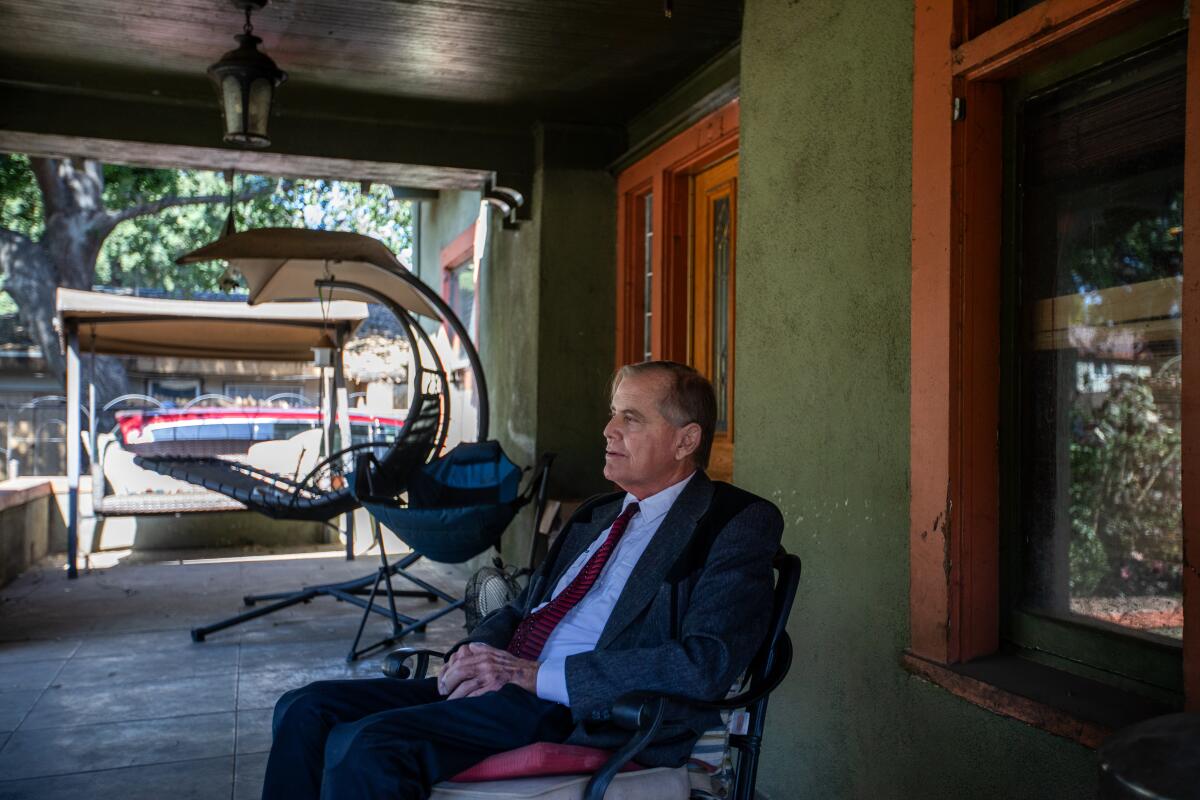
Bales, a longtime member of Door of Hope’s advisory board, said he always imagined his home would one day become a refuge for children.
“I dream of a day when no children will suffer without a roof over their heads in Los Angeles,” he said.
That time came when Bonnie, a nurse at Adventist Health Glendale, “gave me my orders about moving back to Iowa.”
Door of Hope liked the prospect because the house was near its other shelters and had room for expansion. It was also a plus that Bales offered to work with them on selling the project.
“I was willing to go to the neighborhood,” he said. “Their reputation is so good I didn’t need to.”
The deal came together with a $1-million gift from San Gabriel Valley jewelry and watch retailer David SK Lee and his wife, Katherine. The sale is scheduled to close next month. The new home will expand Door of Hope’s current capacity of 36 families by more than 50%.
Twenty-two Skid Row Housing Trust tenants lost their homes in a fire in February. Residents remain scattered and scarred, unable even to recover most of their possessions.
Bales, who has a transplanted kidney — his wife’s — has had quadruple bypass surgery and walks with a cane on prosthetic legs after his second lower-leg amputation in 2021, will ride home at the end of the month in a rental truck driven by one of his sons. But he’s not retiring.
He’ll become executive director of an after-school and summer program for impoverished kids in the neighborhood he worked in decades ago.
On one of their last days in L.A., Andy and Bonnie sat on the porch where they had spent so many days watching the hummingbirds and listening to the neighborhood parrots.
Along with interviews with NBC and The Times, he sat for a promotional video for the Pasadena Community Foundation, which also contributed $100,000 to the Door of Hope project.
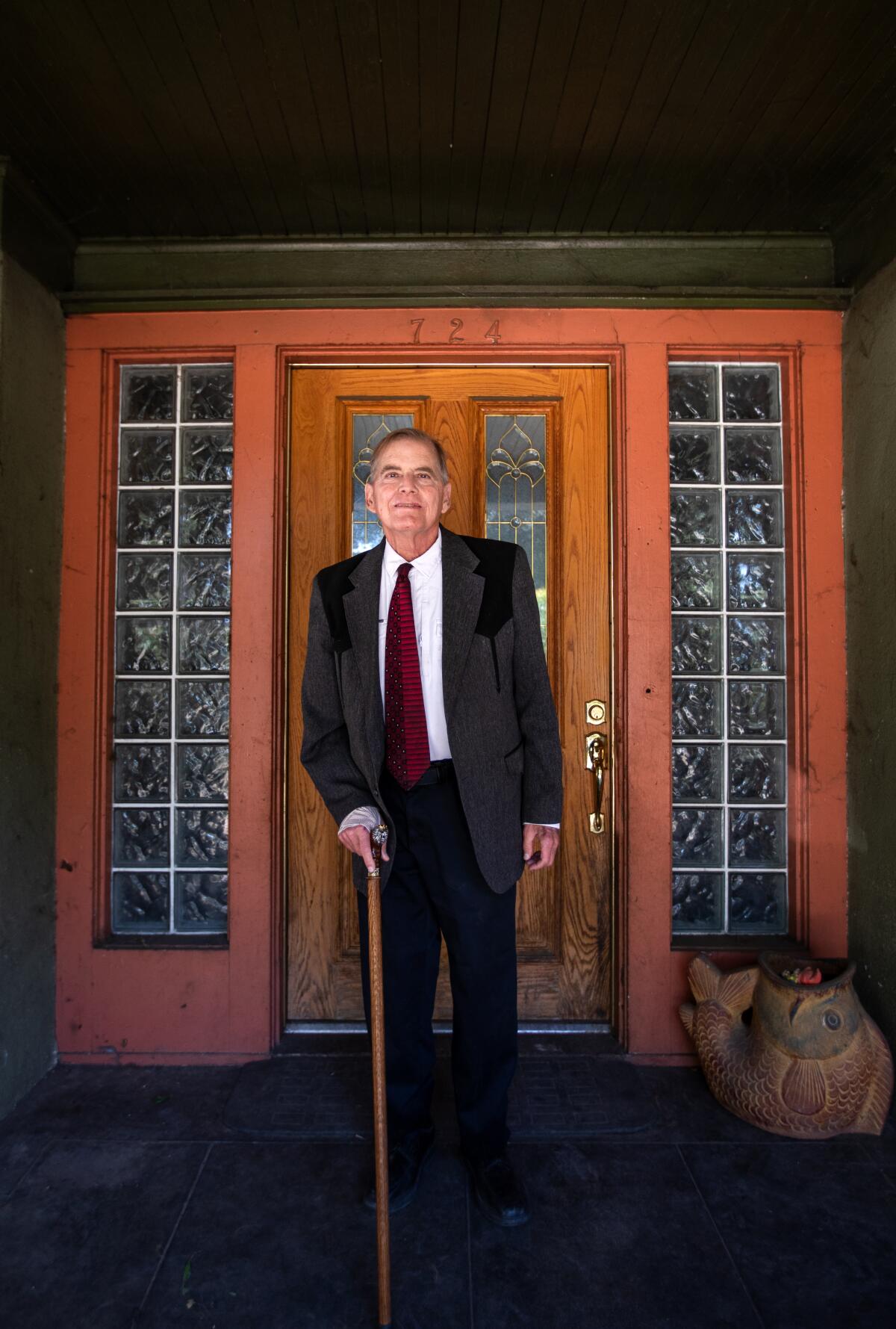
“It’s hard to leave this front porch,” he told the videographer. Still, “when I think of families and little kids out here enjoying the peace and nature, like I have, I’m excited.”
That’s a consolation for the outsider who became the contrarian voice of Skid Row but leaves a mark that even he finds unsatisfactory.
“To be honest, I wish I could have done a much better job ending homelessness,” Bales said, summing up his decades in Los Angeles. “I wish I could have done a better job of influencing policies.
“Although I’ve done some good and I’ve helped save some lives, I thought we could accomplish more.”
Start your day right
Sign up for Essential California for news, features and recommendations from the L.A. Times and beyond in your inbox six days a week.
You may occasionally receive promotional content from the Los Angeles Times.
